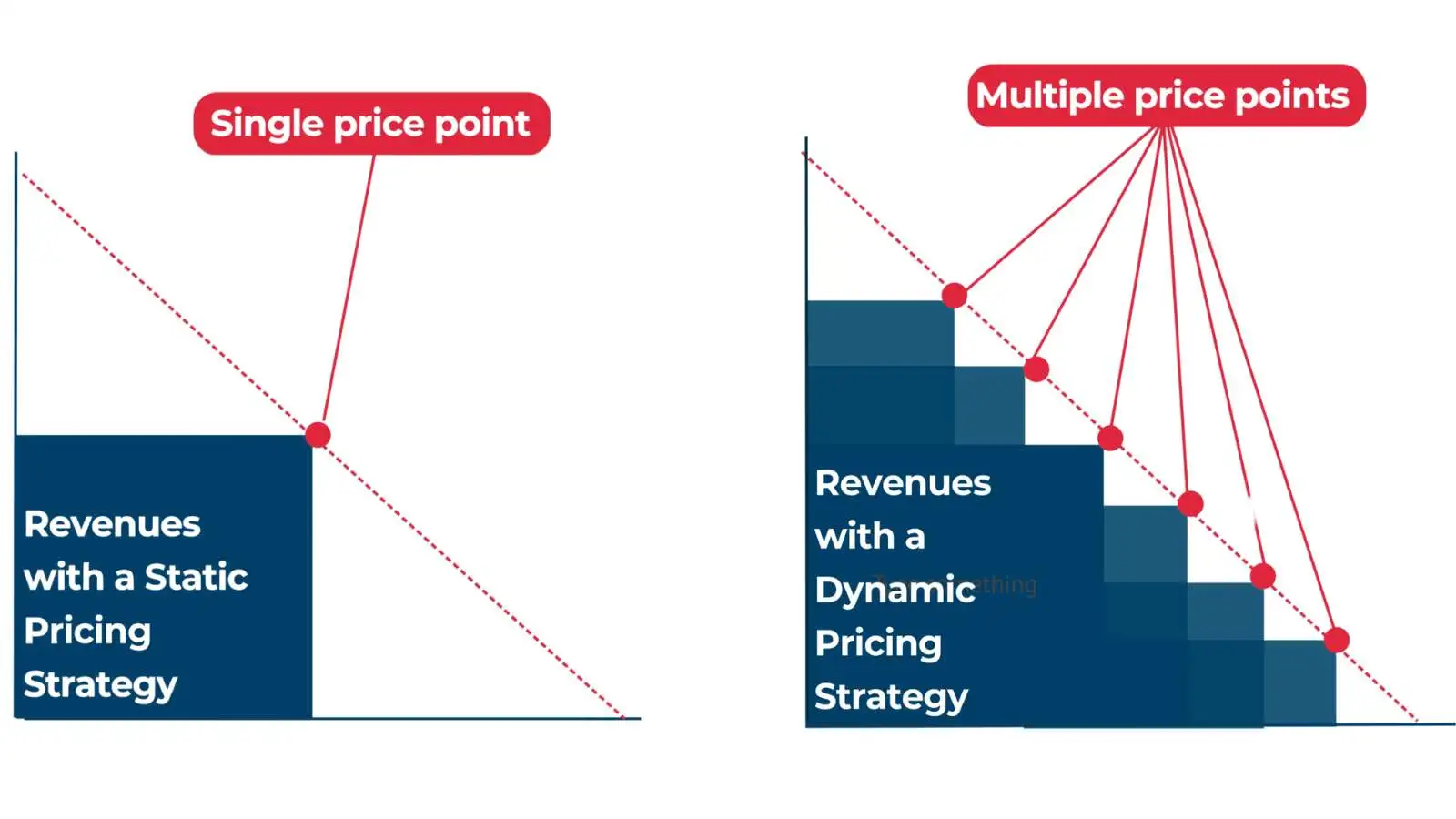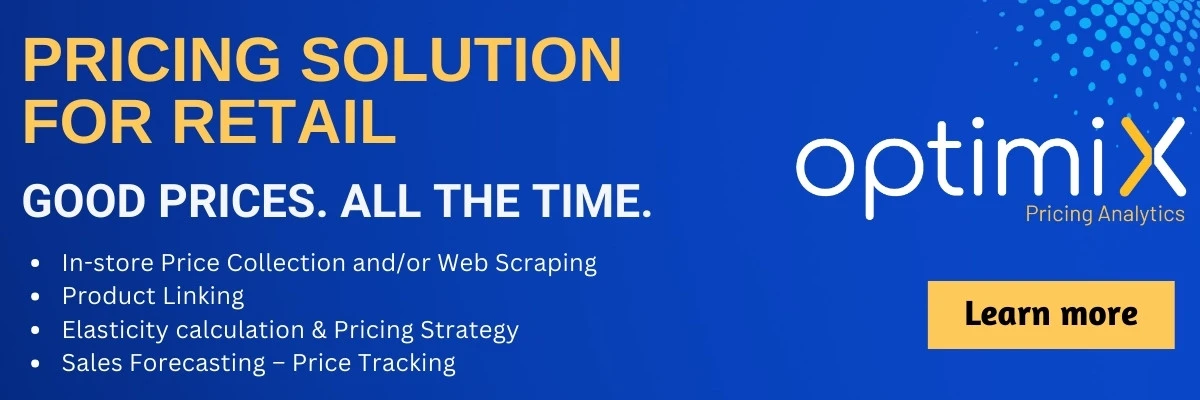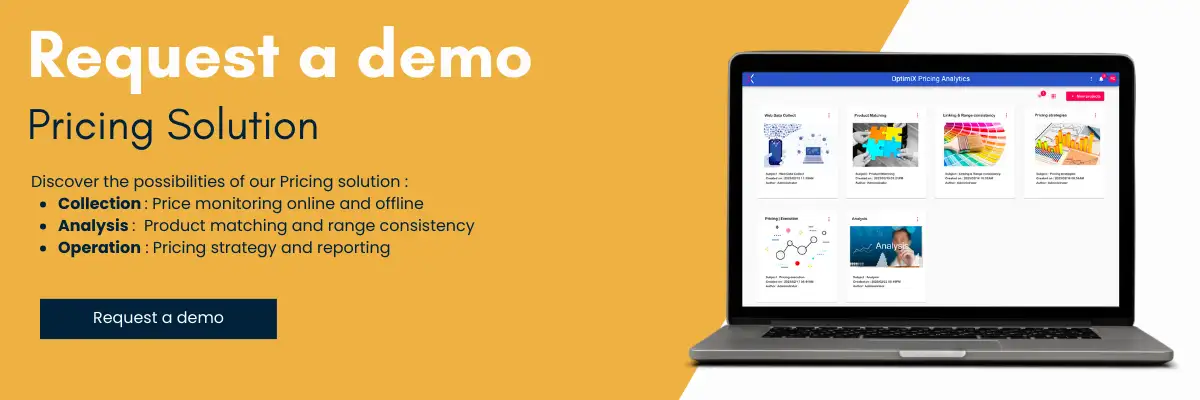In retail, finding effective ways to increase profits represents a constant challenge, especially in the food distribution and household appliances sectors where profit margins can be very low. Increasingly, businesses are moving away from the traditional fixed pricing model to turn to dynamic pricing strategies: a 2021 report highlights that 21% of e-commerce companies in Europe have already adopted this type of pricing.
The pressure is particularly strong for CFOs of large companies navigating periods of price instability. They are responsible for finding sophisticated strategies that take into account enormous amounts of data on consumer behavior and competitive pricing. This shift is fraught with challenges, such as consumer dissatisfaction with price increases and strategies employed by competitors to hide their pricing data. In response, companies are refining their dynamic pricing strategies to remain competitive, even while battling the impacts of inflation and price volatility.
Despite these challenges, dynamic pricing is becoming increasingly important as a strategy for maintaining competitiveness in an increasingly volatile market.
It’s a concept that was already gaining ground before the pandemic, with giants like Amazon adjusting prices in real time for millions of products. This strategy is not only prevalent in the e-commerce and travel sectors, but is becoming increasingly relevant across retail. The shift to online shopping has made consumers more adept at comparing prices, making dynamic pricing an essential tool for retailers looking to get ahead of the curve.
Whether you’re just looking to understand what dynamic pricing is or want to implement it into your business strategy. Whether you are just beginning to explore this concept or looking to refine your existing approach, the following five tips will provide insights to make dynamic pricing work for you.
What is dynamic pricing?
Dynamic pricing, also called automated pricing or dynamic pricing, represents a sophisticated approach taken by businesses to adjust their product or service prices in response to current market dynamics. This strategy is crucial for businesses looking to thrive in the fluctuating landscape of demand, competition and broader market conditions. By leveraging algorithms and artificial intelligence, dynamic pricing analyzes multiple factors, including competitor prices, supply and demand levels, consumer behavior and market forecasts, to make informed pricing decisions.

Employed by giant companies like Amazon, Media Markt, Dell Technologies, this model embodies the integration of automation in retail, where systems process huge sets of data to facilitate price adjustments, potentially multiple times over the course of of a single day. This allows businesses to optimize their profit margins by adjusting prices up or down based on real-time demand: prices can increase during periods of high demand or when competitors raise their prices, and decrease to attract buyers during sales or when the market demand weakens.
1. Analyze your finances and sales history
To effectively implement a dynamic pricing strategy, it is essential to have a solid understanding of your finances.
Take a Close Look at Your Cost of Goods Sold (COGS), Profit Margins and Pricing Markups. A thorough analysis of COGS—the direct costs associated with manufacturing your products—is particularly vital for dynamic pricing. This understanding establishes the basis for informed pricing decisions, ensuring that your markups not only cover COGS but also take into account additional operational costs, such as rent, utilities and payroll, to maintain a healthy profit margin.
Additionally, carefully examining past sales data is key to uncovering trends, seasonal influences and consumer behavior patterns. The Optimix XPA pricing solution provides a wide range of data to inform your pricing strategy. Additionally, leveraging Optimix XPA can offer deeper insights into consumer purchasing trends and behaviors, simplifying the process of tracking these critical figures.
2. Dynamic pricing and perishable products
Dynamic pricing becomes a valuable strategy in scenarios where products have a fixed, perishable inventory or where there is a capacity limit combined with varying willingness to pay among consumers. These perishable products can vary widely, including, but not limited to, food items nearing their expiration date, event or sports tickets, and flights. These goods and services share the community that, after a specific date, their sale is no longer feasible.
When developing a dynamic pricing strategy for perishable goods or services, consider these key aspects:
Temporality and Rarity
Evaluate the remaining life of the product and its rarity. A buyer perceives more value when there is ample time before expiration, affecting their willingness to pay (WtP). In scenarios where WtP decreases over time, a longer time frame means the buyer is positioned higher on the curve, willing to pay more. Conversely, as WtP increases over time, more time results in the buyer being at the lower end of the curve, not willing to pay extra.
Competition
Evaluate the availability of competitive alternatives and their pricing. For very specific goods, such as tickets to a high-demand football match, alternatives are rare. However, for perishable foodstuffs on sale on their last day of sale, alternatives abound.

3. Manage customer perception
Effective communication is key to preventing negative customer reactions when introducing dynamic pricing strategies. It is important to transparently and clearly announce any price changes to customers, offering explanations of the reasons for these adjustments. Additionally, collecting and considering customer feedback on price changes can help understand their perspectives and drive improvements.
Tactics for successful communication include:
Price Alerts: Keep customers informed of significant price changes to set the right expectations.
Value communication: highlight the benefits and value that customers get, despite price variations, by highlighting product quality or service excellence.
Personalized Offers: Providing special offers and discounts to loyal customers as a way to alleviate any potential dissatisfaction.
4. Use technology to your advantage
Integrating dynamic pricing into your business operations can require a significant investment of time when managed manually. It is necessary to gather extensive data for each item on a daily basis, and this task becomes exponentially difficult with a wide range of products, requiring a considerable workforce dedicated solely to data collection and management.
Optimix Offers a solution to simplify the adoption of dynamic pricing in your company. Our XPA pricing tool helps to effectively monitor market trends and monitor competitors’ prices, providing the crucial information needed to develop an effective pricing strategy.
With the strategy and rules established for specific products or categories, price adjustments are executed automatically according to the described approach. This automation not only saves valuable time, but also ensures a competitive advantage for your business, while maintaining the transparency valued by your customers.
5. Pay attention to frequent price changes
Dynamic pricing strategy has the potential to both boost and hurt your business. Regularly adjust prices without informing your customers can lead to a loss of trust and a perception of deception. Since trust is a cornerstone for securing repeat business, erratic and unpredictable pricing could alienate your customer base, decreasing their loyalty.

Conversely, leveraging this strategy effectively involves transparent communication about your commitment to offering the most competitive prices on the market. Highlighting your practice of frequent price adjustments as a benefit to the consumer can turn a potential disadvantage into a competitive advantage. By assuring customers of your price guarantees, you not only prevent them from switching to competitors but also strengthen their loyalty to your brand.
Conclusion
Dynamic pricing is an innovative strategy that combines technology and economic concepts. It aims not only to increase profits but also to balance market demand and enrich consumer experience.
To take full advantage of dynamic pricing, it’s crucial to keep an eye on the competition, carefully prepare your team, and use powerful dynamic pricing software. By doing so, you will be able to optimally adjust your prices, increase your market share and ensure long-term success.
To find out how dynamic pricing can drive growth for your business, don’t hesitate to chat with our pricing experts or request a demo.




